A product has been added to the basket
The Greatest Pen Inventions of All Time

The Greatest Pen Inventions of All Time
The Reed Pen - 4th Century
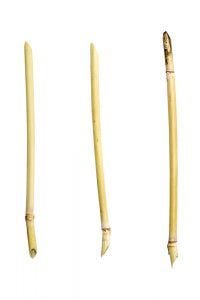 The first citing of a pen dates back to the 4th century BC with the Ancient Egyptian scribes who would write hieroglyphics on papyrus. The Egyptians didn’t favour a Parker 51, but rather a “Reed Pen”, a single piece of reed pointed into a square and split at the point. Their Inflexible nibs became blunt quite quickly.
The first citing of a pen dates back to the 4th century BC with the Ancient Egyptian scribes who would write hieroglyphics on papyrus. The Egyptians didn’t favour a Parker 51, but rather a “Reed Pen”, a single piece of reed pointed into a square and split at the point. Their Inflexible nibs became blunt quite quickly.
The Feather Quill - 9th Century
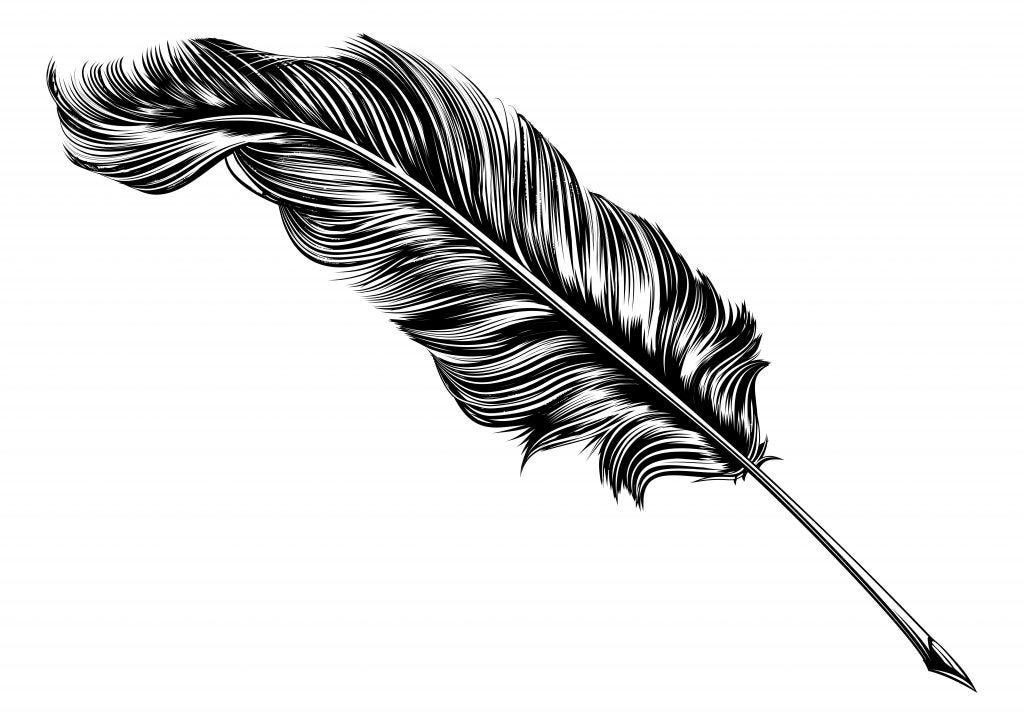
The feather quill pen, made from goose, swan and turkey, was the most popular writing instrument from the 9th century up until the 19th It was especially popular during the middle ages because they worked well with parchment.
The First Fountain Pen? (not quite) - 1636
It was a clever modification to the quill which included a reservoir of ink. German inventor Daniel Schwenter described a pen made from two quills, one serving as a reservoir for ink inside the other quill.
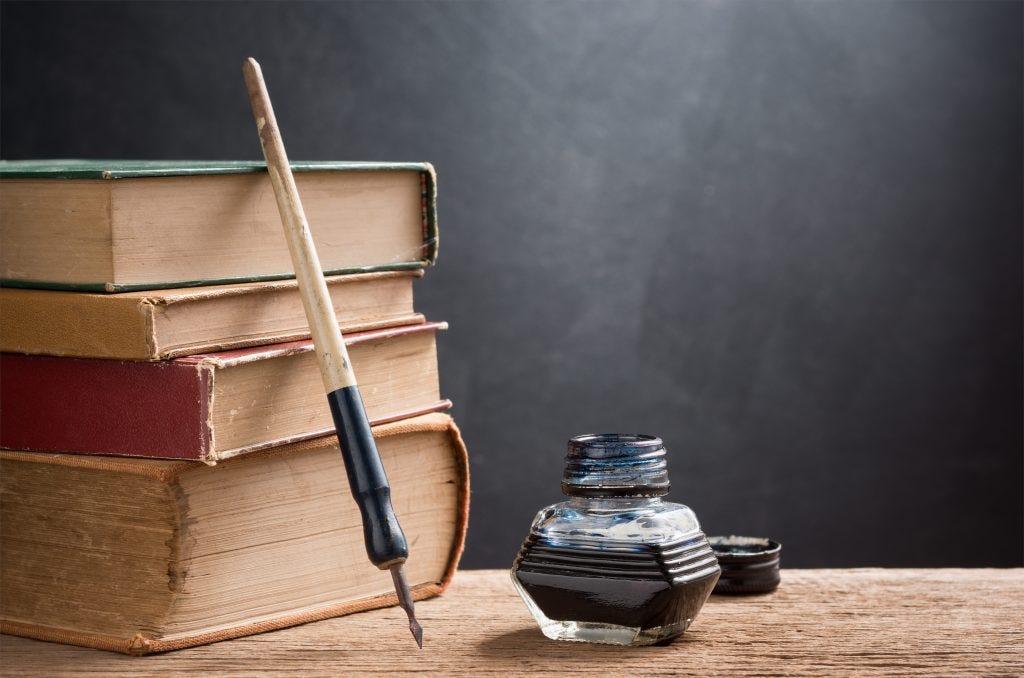
Dip Pens - 1820
The era of the “quill” finally drew to a close end around the 1820s with the mass produced dip pen. A metal nib with capillary channels (similar to that of a modern fountain pen) is attached to a wood or metal handle. Whilst a lot of dipping is required, it offers a diverse range of mark making and can produce an extremely fine point. Some illustrators still use it.
The Birth of the Fountain Pen
So this is where we get serious, the arrival of the fountain pen as we know it. The key was creating a pen with reservoir of ink that reliably supplied the nib without leaking, scratching….
The first fountain pen patent - 1827
The Romanian inventor Petrache Poenaru received a French patent on May 25, 1827, for the first fountain pen. Whilst studying in France, he was so busy scribbling notes he needed an instrument that would save him time.
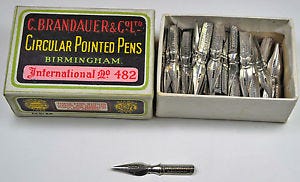
Mass production of affordable nibs - 1828
William Joseph Gillott, William Mitchell, and James Stephen Perry devised a way to mass manufacture strong and cheap steel nibs. More than half the steel-nib pens manufactured in the world were made in Birmingham by the 1850s.
Iridium tipped gold nibs, hard rubber and free flowing ink - 1850s
Fountain pens became a widely popular writing instrument after these 3 key inventions.
Mass production - 1880s
Waterman patents the first practical fountain pen and dominates production.
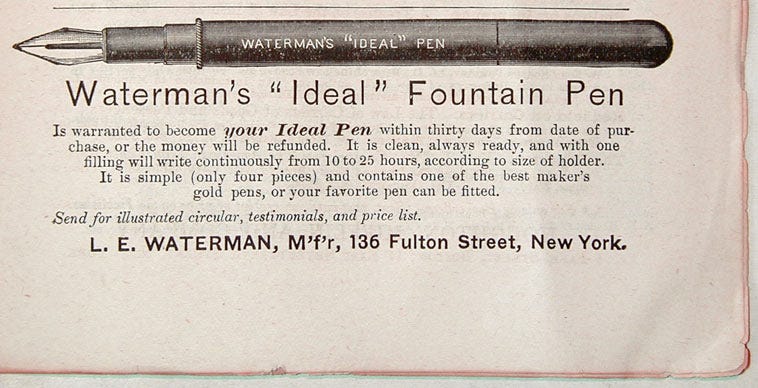
Reliablility & Convenience
To start with fountain pens were messy and leaked! They were filled by inserting ink into the barrel wit
h an eyedropper which was also slow. The key was evolving the fountain pen
with a more efficient filling system, and trusty ink flow.
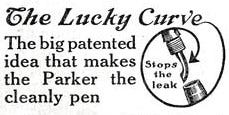
“Lucky Curve” Feed System by Parker - (1895)
It was so successful that Parker used it for decades.
“The Spoon Feed” - 1899
Waterman came up with an ink supply system that prevented ink overflow.
Pen Clip - 1904
Introduced by Waterman in 1904, it’s hard to believe fountain pens went without a clip for so long!
The Self Filling Pen - 1907
Sheaffer added a deflatable rubber sac to hold the ink instead of using an eyedropper. A seminal moment in filling pens.
The Waterman Safety Pen -1908
Up until this moment in pen history, pens tended to leak because they didn’t have an airtight cap. The Waterman safety pen incorporated a screw-on cap, with an inner cap that sealed around the nib. This solved the leakage problem.
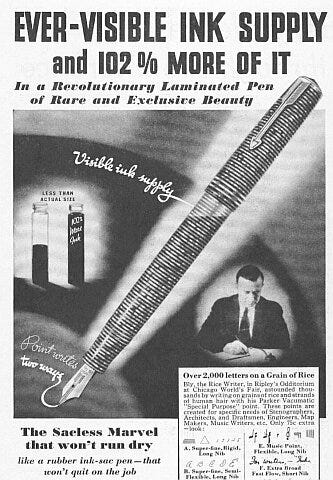
Parker Duofold - 1921
The Duofold can possible be accredited with being the world’s first dependable fountain pen
Parker Vacumatic - 1933)
Parker developed a diaphragm that expanded into the barrel of the pen which held more ink than Sheaffer’s deflatable sac.
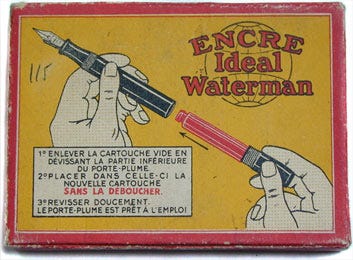
The plastic pen cartridge - 1953)
It's hard to believe our plastic frends weren’t available until 1953. Introduced by Waterman pens
The Modern Era
The Ballpoint Pen - 1938 (ish)
Officially the ballpoint pen was invented in 1938 by a Hungarian newspaper editor called Laszlo Biro. What “they” don’t want you to know is that there were 2 much earlier inventions that nearly did it.
The Stylographic pen
Invented 70 years prior to Biro’s, the ink was placed in a thin tube blocked by a tiny ball, and a wire acted as a valve. It can be credited to Alonzo T. Cross ( of Cross Pens). Nowadays it is used for drafting and technical drawing
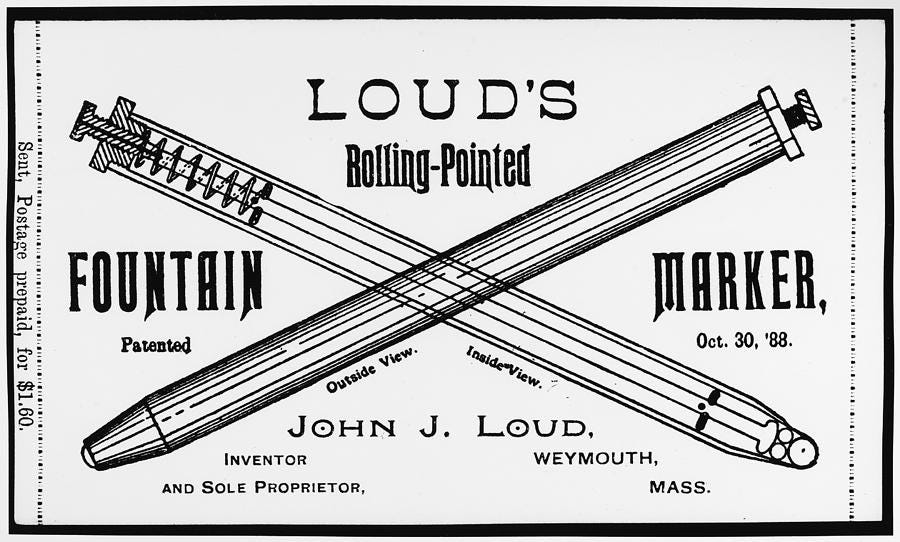
The First Ballpoint Pen patent
John J Loud came upon the invention when he was trying to make a pen that wrote on uneven surfaces such as wood. It was too coarse for standard paper, and the discovery went unexploited.
The Biro
Laszlo Biro used his expertise in newspaper ink to realise inks used in newspaper printing dried quickly, leaving the paper dry and smudge free. Bíró's innovation successfully combined ink-viscosity, a pressurised reservoir and ball-socket mechanism to prevent ink from drying inside the reservoir and controlling ink flow. The patent was thus granted.
Lamy 2000 - 1966
The 2000 completely changed the way we think about pen design, heralding an era of modernity. With its functional shape determined solely by practicality, it used a brave combination of materials such as stainless steel and Makrolon.
Moleskine Smart Pen - 2016
The moment 21st century technology was in perfect harmony with traditional writing instruments. Your smartphone device captures your note taking in real time. Your notes can then be digitally manipulated by changing colours etc, and can then be emailed. Using handwriting recognition software, your handwritten notes can be transformed into digital type.
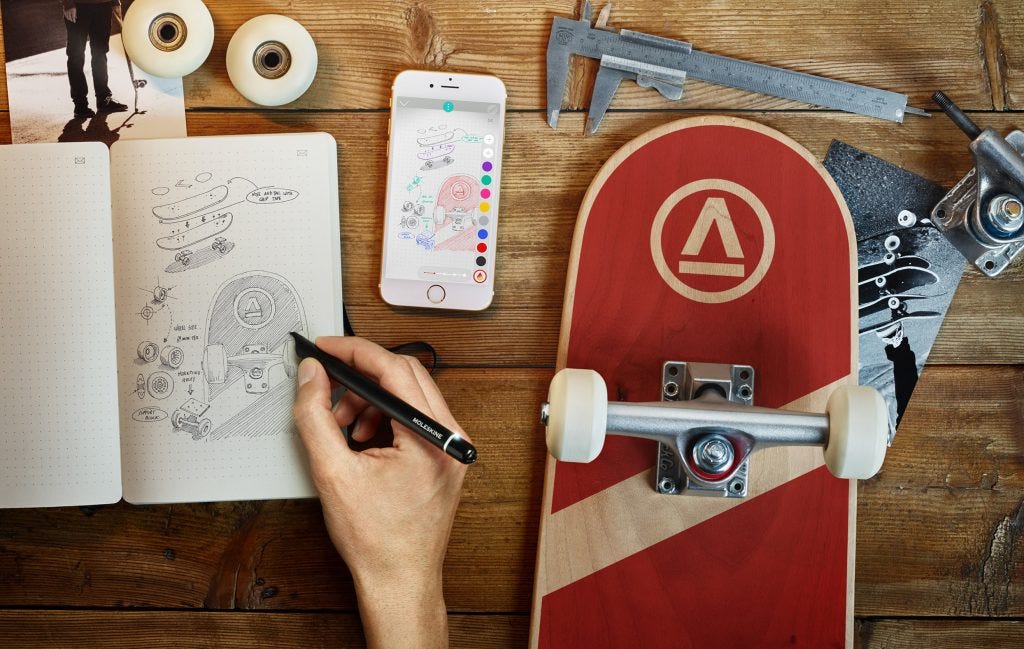






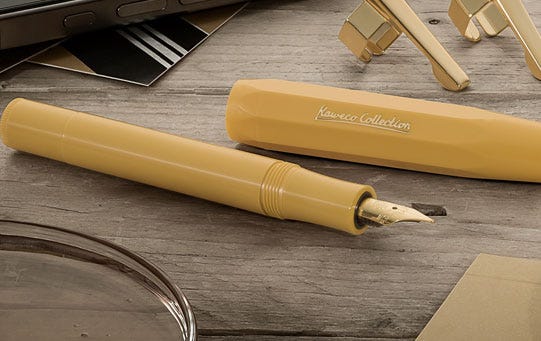




Comments
I loved your history of the pen. When I was at school, we had dip pens for handwriting lessons. Never being a tidy writer, these lessons turned my Friday afternoon into misery as I never could manage a blot free page. Later on we were allowed to use fountain pens and my parents gave me my first one for my birthday. It made a big difference to the page of handwriting that had to be produced.
I still enjoy writing with a fountain pen and use one if needed to write cards and notes to people.
What about the filling of fountain pens, geared piston (Pelikan), eversharp (bought by parker) cartridge not sure if this came before 1953 though, then the failed Parker capillary which arrived at the wrong time which with the right ink is wonderful, Onoto Piston filler.
I loved your history of the pen. When I was at school, we had dip pens for handwriting lessons. Never being a tidy writer, these lessons turned my Friday afternoon into misery as I never could manage a blot free page. Later on we were allowed to use fountain pens and my parents gave me my first one for my birthday. It made a big difference to the page of handwriting that had to be produced.
I still enjoy writing with a fountain pen and use one if needed to write cards and notes to people.
What about the filling of fountain pens, geared piston (Pelikan), eversharp (bought by parker) cartridge not sure if this came before 1953 though, then the failed Parker capillary which arrived at the wrong time which with the right ink is wonderful, Onoto Piston filler.